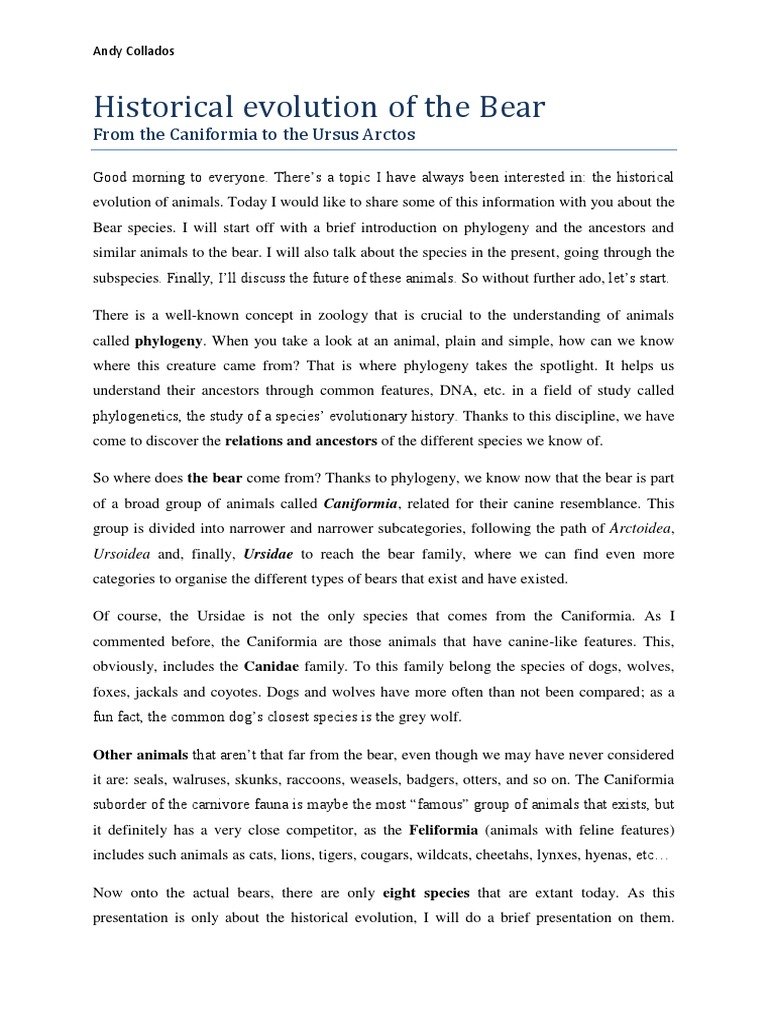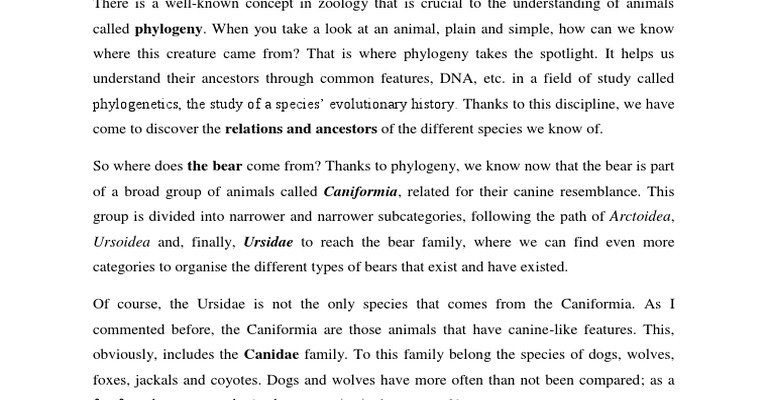
Let’s take a quick journey back in time, tracing the roots of these remarkable mammals. You might picture a bear emerging from a dense forest or strolling along a riverbank, but their history begins much earlier in a world that looked quite different from today. The tale starts in the late Eocene epoch, around 55 million years ago, when creatures similar to today’s bears began to evolve from their carnivorous ancestors.
The Origins of Bears
Bears belong to a group called Carnivora, which also includes other meat-eaters like wolves and seals. The earliest bear-like creatures came from a lineage called the Ursidae family, which branched off from other carnivorous mammals. Picture a small, dog-like animal roaming the ancient forests. This creature was called Ursavus, and it lived around 20 million years ago. Ursavus had some similarities to today’s bears, but it was much smaller and had a different diet.
As time passed, these early bears adapted to their surroundings, leading to the emergence of different species. The earliest true bears, such as Arctodus and Ursus, appeared around 3 million years ago. Think of them as the grandfathers of modern bears, with some species reaching sizes comparable to that of a modern grizzly or polar bear. These ancient bears roamed various habitats, from forests to tundras, showcasing their versatility.
The Great Bear Migration
The migration of bears is a captivating chapter in their evolutionary tale. During the last ice age, around 1 million years ago, bears faced significant environmental changes due to rising and falling temperatures. These shifts forced them to adapt to colder climates, leading to the evolution of species like the polar bear.
Polar bears branched off from brown bears a few hundred thousand years ago, evolving to thrive in icy habitats. With their white fur for camouflage, thick blubber for warmth, and keen hunting skills for seals, they became the quintessential symbol of survival in harsh environments. This migration illustrates how bears can be both adaptable and specialized, depending on their surroundings.
A Closer Look at Bear Species
Today, there are eight recognized species of bears, each with unique traits and behaviors. Here’s a snapshot of some of the more well-known species:
- American Black Bear: The most versatile bear, found in forests, swamps, and even mountains.
- Grizzly Bear: A powerful omnivore, known for its size and strength, found in North America.
- Polar Bear: The largest land carnivore, adapted to the Arctic environment and often seen on sea ice.
- Giant Panda: Known for its distinct black and white fur, primarily munching on bamboo.
Each species evolved differently based on their habitats and available food sources. For example, the giant panda’s diet is almost exclusively bamboo, unlike other bears, which are omnivorous. Understanding these differences helps us appreciate how bears have adapted over time.
The Role of Bears in Ecosystems
Bears play a vital role in maintaining ecological balance. Their feeding habits help control the populations of various plant and animal species. When bears forage for food, they often dig up roots or consume large quantities of fruit. This behavior can facilitate seed dispersal and promote plant growth in their habitats.
Moreover, bears are crucial for nutrient cycling within ecosystems. When they catch fish or consume other prey, their waste products enrich the soil, promoting plant health. It’s a beautiful cycle that showcases the interconnectedness of life in the wild. Without bears, many ecosystems would face significant disruptions.
Conservation Challenges and Efforts
Sadly, bears face numerous threats today, primarily from habitat loss, climate change, and human interaction. Forests are shrinking due to urban development and logging, while changing climates affect their habitats, especially for species like polar bears.
Conservation efforts are crucial to ensure the survival of these magnificent creatures. Initiatives focus on habitat preservation, research, and education to raise awareness. For instance, protecting migration routes and creating wildlife corridors can help bears safely navigate their changing environments.
The Future of Bears
As we look ahead, it’s essential to consider how we can coexist with bears and support their populations. Sustainable practices, responsible tourism, and community engagement are critical for their survival. Education plays a vital role here; understanding bear behavior can prevent conflict and promote respect for these animals.
Here’s the thing: while bears are incredibly resilient, they still need our help. By advocating for their protection and working together, we can ensure that future generations will continue to marvel at these majestic creatures.
The evolutionary history of the bear is a testament to resilience, adaptability, and the intricate balance of nature. From their ancient ancestors to the diverse species we see today, bears have carved a unique niche in our world. By learning about their past and our role in their future, we can foster a deeper appreciation for these remarkable animals. Whether you spot a bear in the wild or just enjoy their stories from afar, remember their journey is an essential part of our planet’s history. Let’s protect their legacy together.

